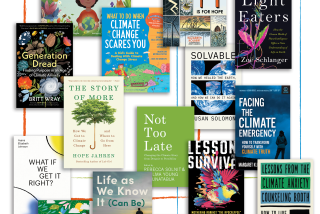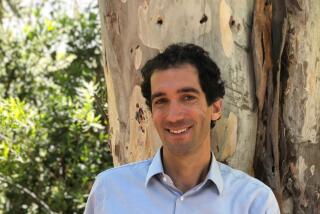ENVIRONMENT
- Share via
A NATURAL HISTORY OF NATURE WRITING by Frank Stewart. (Island Press: $21.95; 279 pp.) In this elegant volume, Stewart, poet and professor of English at the University of Hawaii, makes a case for the contribution of nature writers, who, in Edward Hoagland’s words, “combine rhapsody with science and connect science with rhapsody.” Stewart culls six writers from the last 150 years of this proud tradition: Henry David Thoreau (1817-1862), John Burroughs (1837-1921), John Muir (1813-1914), Aldo Leopold (1887-1948), Rachel Carson (1907-1964), and Edward Abbey (1927-1989). Thoreau distinguished himself from his predecessors, amateur scientists and field naturalists, by injecting his own “individualistic, unpredictable” voice, his own aesthetic, and his own ethics into his recording of the details of the natural world around him. Burroughs railed against “slipshod and sentimental nature books,” Muir chronicled the simply described direct encounter with wilderness, Leopold “recognized that aesthetics, like ecology, requires the cognitive ability to see things whole, to see the details without losing sight and sense of a greater unity.” He warned against “overconfidence” in applied science. Edward Abbey, the original monkey-wrencher, railed against cute cuddly images of wilderness and wild creatures. “We need no more words on the matter,” he wrote. “What we need now are heroes.”
More to Read
Sign up for our Book Club newsletter
Get the latest news, events and more from the Los Angeles Times Book Club, and help us get L.A. reading and talking.
You may occasionally receive promotional content from the Los Angeles Times.










